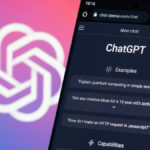“In the midst of chaos, there is also opportunity.” — Sun Tzu
Executive Summary
In a report published in early March, analysts at Celent advised P/C insurance leaders about the significant risk of doing nothing with large language models. The "competitive gap established by early adopters could be sustainable due to an LLM's inherent ability to learn and improve," they wrote in an announcement about the report.But what exactly should they do today? Here, Celent Analyst Andrew Schwartz provides answers, laying out some basics for CEOs, COOs and functional leaders, advising on where to start, what they need to be thinking about today, what they should be planning and, importantly, how should they be coordinating their efforts with regulatory bodies.
We are living in an epoch of profound transformation and paradox, reminiscent of Charles Dickens’ “best of times” and “worst of times.” This dichotomy deeply resonates in the insurance sector as we stand on the brink of a brave new world, one shaped by the transformative potential of artificial intelligence (AI) and large language models (LLMs).
In this era of digital disruption, the danger of inertia for property/casualty insurers is real and imminent. The urgency for businesses to innovate and reinvent is palpable. The challenge is not about whether to act but how best to navigate the uncharted territory of AI and LLMs, such as ChatGPT.
This piece endeavors to articulate the “What to Do” segment of Celent’s flagship report, “ChatGPT and Other Large Language Models: P/C Insurance Edition,” setting forth a pragmatic road map for C-suite executives and operational leaders.

































